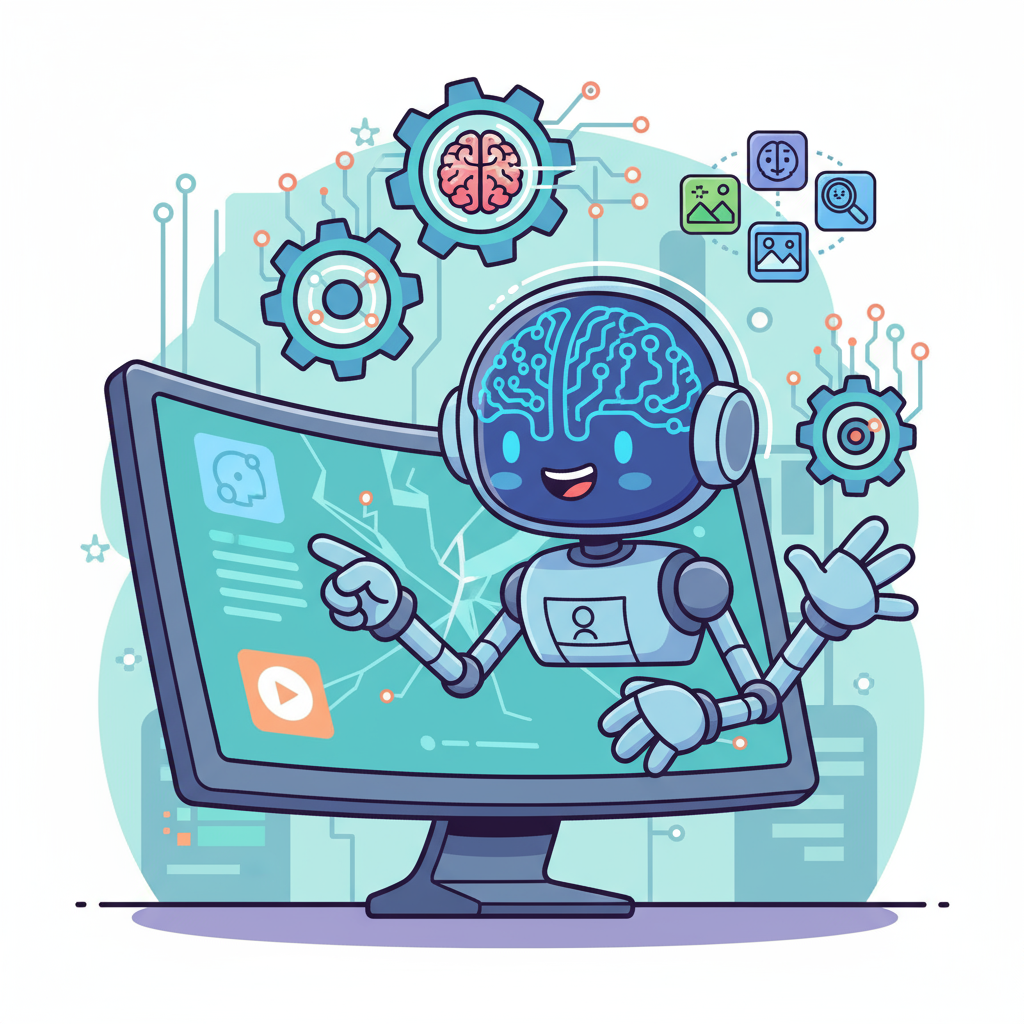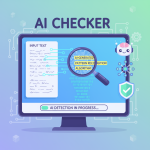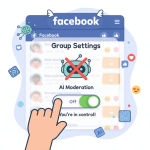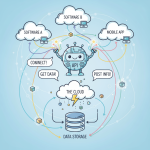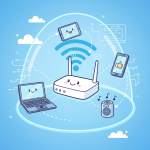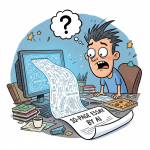Have you ever wondered, “Are there AI that analyze images and understand what they see?”
The short answer is yes — and not only do they exist, but they’re also transforming everything from medical diagnostics to social media, financial analysis, and even art creation.
In today’s AI-driven world, machines can detect faces, recognize emotions, identify objects, interpret scenes, and even generate new images with astonishing accuracy. Understanding how this works — and where it’s headed — is essential for developers, professionals, and everyday users alike.
In this article, you’ll learn:
-
How AI analyzes images through machine learning and computer vision
-
Real-world applications across industries
-
The most advanced AI models and tools available today
-
Ethical challenges and the future of AI image analysis
Let’s dive into the fascinating world of AI image understanding.
⚙️ What Does It Mean to “Analyze an Image” with AI?
Before diving into the tech, let’s define what image analysis really means.
Image analysis refers to the process of using artificial intelligence (AI) and computer vision algorithms to extract meaningful information from digital images.
This includes identifying:
-
Objects (people, cars, animals, etc.)
-
Facial expressions and emotions
-
Text and numbers (through Optical Character Recognition or OCR)
-
Patterns, colors, or anomalies
-
Context, such as the relationship between multiple objects in a scene
So when people ask, “Are there AI that analyze images?” — they’re referring to systems that can “see,” “understand,” and “interpret” visual information much like humans do — only faster, at scale, and sometimes with more precision.
🧩 How Does AI Analyze Images? (Step-by-Step)
AI-powered image analysis involves a combination of machine learning (ML) and deep learning (DL) methods — primarily using neural networks that mimic how the human brain processes visuals.
Here’s a simplified breakdown:
1. Data Collection and Labeling
AI models are trained on millions of labeled images.
For instance, an AI learning to identify cats needs to see thousands of cat pictures tagged as “cat.”
2. Feature Extraction
Early AI models manually defined visual features like edges or shapes.
Modern deep learning models (like Convolutional Neural Networks, or CNNs) automatically learn these features.
3. Model Training
Using neural networks, the AI learns to map pixel data to concepts — for example, understanding that certain shapes and textures often mean “human face.”
4. Prediction & Inference
When presented with a new image, the trained AI predicts what it sees — labeling, classifying, or describing the content.
5. Feedback Loop
With reinforcement and retraining, the model continuously improves accuracy and generalization.
🧠 Core Technologies Powering Image-Analyzing AI
🔸 1. Convolutional Neural Networks (CNNs)
CNNs are the backbone of AI image analysis. They detect features like edges, colors, and patterns using layers of “filters.”
Popular CNN architectures include:
-
AlexNet
-
ResNet
-
InceptionNet
-
EfficientNet
These models revolutionized image recognition accuracy in computer vision benchmarks.
🔸 2. Vision Transformers (ViT)
Newer models, such as Vision Transformers (ViT), handle image analysis like Natural Language Processing (NLP) does text.
They analyze images as sequences of “patches,” improving context understanding.
🔸 3. Generative AI for Images
Tools like DALL·E, Midjourney, and Stable Diffusion don’t just analyze — they also create images based on textual prompts.
These systems combine analysis + synthesis, learning from massive image-text datasets to understand patterns deeply.
🔸 4. Optical Character Recognition (OCR)
AI tools such as Google Vision API or Tesseract OCR detect and extract text from images, revolutionizing document scanning, ID verification, and content indexing.
🌍 Popular AI Tools That Analyze Images
There are dozens of powerful AI platforms that analyze images — both open-source and commercial.
Here are some of the most widely used and effective ones in 2025:
| Tool | Key Features | Best For |
|---|---|---|
| Google Cloud Vision API | Object detection, OCR, facial analysis, landmark recognition | Enterprises & apps |
| Amazon Rekognition | Face analysis, sentiment detection, video frame tracking | Retail, security, media |
| Microsoft Azure Computer Vision | Image tagging, scene understanding, handwriting OCR | Cloud developers |
| Clarifai | Custom AI model training, API integrations | Startups, developers |
| OpenAI CLIP | Connects text with visual context | Research, creative AI |
| DeepAI Image Recognition API | Object & face analysis via REST API | Web developers |
| YOLOv8 (Open Source) | Real-time object detection | Computer vision engineers |
💡 Fun Fact: Some models can analyze over 10,000 images per second, making them vital for industries needing instant visual insights.
🏭 Real-World Applications of AI Image Analysis
AI that can analyze images isn’t just theoretical — it’s already embedded in almost every major industry.
Here’s how it’s transforming sectors globally:
🏥 1. Healthcare
AI systems analyze X-rays, MRIs, and CT scans to detect diseases early.
For instance:
-
Google DeepMind identifies eye diseases and breast cancer signs.
-
PathAI assists pathologists in analyzing tissue samples.
Result: Faster diagnoses, fewer errors, and improved patient outcomes.
🚗 2. Autonomous Vehicles
Self-driving cars from Tesla, Waymo, and others rely on computer vision AI to analyze road conditions, detect pedestrians, and interpret traffic signals in real time.
🛍️ 3. Retail & E-Commerce
AI analyzes product photos to improve visual search — letting users upload images to find similar products.
Example: Amazon’s “search by image” feature helps identify exact or related items instantly.
🔒 4. Cybersecurity & Surveillance
Facial recognition systems and anomaly detection algorithms help identify unauthorized individuals or suspicious activities in real-time video streams.
📸 5. Social Media & Marketing
Platforms like Instagram, TikTok, and YouTube use AI to analyze image content, classify trends, and automatically tag objects or faces.
Marketers benefit from AI-driven image analytics to measure engagement, audience demographics, and content effectiveness.
🧑🎨 6. Art & Design
AI now assists creators by analyzing composition, color palettes, and even generating AI-assisted art.
Tools like RunwayML and Adobe Firefly integrate deep image understanding with creativity.
🧬 7. Agriculture, Manufacturing, and Space
-
Drones use image AI for crop health monitoring.
-
Factories apply visual inspection to detect product defects.
-
NASA uses AI to analyze satellite imagery for climate change research.
🧮 How AI Image Analysis Differs from Traditional Image Processing
| Aspect | Traditional Image Processing | AI Image Analysis |
|---|---|---|
| Approach | Rule-based, manual feature extraction | Data-driven, automated learning |
| Scalability | Limited to specific tasks | Highly scalable, multi-domain |
| Adaptability | Rigid algorithms | Learns and adapts with data |
| Performance | Good for basic tasks | Superior for complex recognition |
| Examples | Filters, edge detection | Face ID, object detection, scene analysis |
🔍 Ethical and Security Concerns
While AI that analyzes images offers massive benefits, it also raises serious ethical questions.
⚠️ 1. Privacy Risks
Facial recognition AI can be misused for surveillance, tracking individuals without consent.
⚠️ 2. Bias and Fairness
AI models trained on biased datasets may misidentify or underperform for specific demographics.
⚠️ 3. Deepfakes
AI-generated fake images can spread misinformation or fraud.
⚠️ 4. Data Security
Images containing personal information must be protected to comply with GDPR and global privacy laws.
✅ Best Practices for Responsible AI Image Use:
-
Use diverse, representative datasets
-
Follow AI transparency and explainability principles
-
Apply ethical review in AI deployment
-
Anonymize sensitive visual data
💡 Future of AI Image Analysis: What’s Next?
As AI models evolve, the next generation of image analysis tools will be more context-aware, ethical, and multimodal.
🚀 Emerging Trends:
-
Multimodal AI — Integrating text, sound, and video with image understanding (e.g., OpenAI’s GPT-Vision).
-
Edge AI — Real-time image analysis on mobile or IoT devices without sending data to the cloud.
-
Explainable Vision Models — Offering human-readable insights into how AI makes visual decisions.
-
Zero-Shot Learning — Recognizing objects without prior training examples.
-
AI + AR/VR Integration — Analyzing and generating visuals inside immersive environments.
The next wave of AI won’t just analyze images — it will understand context, emotion, and intent.
📘 Practical Tips for Using AI Image Analysis Tools
For developers, businesses, or educators exploring AI image tools, here are some actionable tips:
-
Start with Cloud APIs: Tools like Google Vision or Azure Computer Vision are easy to integrate.
-
Use Pre-Trained Models: Frameworks like PyTorch and TensorFlow Hub offer ready-to-deploy vision models.
-
Ensure Data Quality: Poor image data leads to biased or inaccurate models.
-
Experiment with Open Datasets: Try ImageNet, COCO, or OpenImages for hands-on projects.
-
Prioritize Privacy: Always anonymize sensitive or personal visual data.
❓ FAQs: Are There AI That Analyze Images?
1. Are there AI that can analyze images in real time?
Yes. Real-time image analysis is used in autonomous vehicles, surveillance, and robotics using advanced models like YOLOv8 and ResNet.
2. What is the most accurate AI for image analysis?
Models like Google Cloud Vision, OpenAI’s CLIP, and Meta’s Segment Anything Model (SAM) currently lead in accuracy and versatility.
3. Can AI understand emotions in images?
Yes. Emotion recognition AI detects facial expressions, micro-movements, and context clues to identify happiness, anger, or sadness.
4. Is AI image analysis safe for privacy?
It depends on implementation. Responsible AI systems follow data protection laws (like GDPR) and avoid unauthorized facial recognition.
5. How can I build my own image-analyzing AI?
Use frameworks like TensorFlow, Keras, or PyTorch. Start by training on labeled datasets and experiment with CNN or Vision Transformer models.
🚀 Final Thoughts: The Power of Visual Intelligence
So, are there AI that analyze images?
Absolutely — and they’re evolving at lightning speed. From identifying tumors to moderating online content, AI-powered visual intelligence is quietly shaping the modern world.
For developers, researchers, and innovators, the question is no longer “can AI analyze images?” — it’s “how can we use it responsibly and creatively?”
As we move toward a future where AI “sees” the world as we do — maybe even better — the real opportunity lies in building trust, transparency, and innovation around this incredible technology.
Want to explore AI tools that analyze images?
Check out open APIs like Google Vision, Clarifai, or Hugging Face models — and start experimenting today with your own AI visual intelligence projects.
